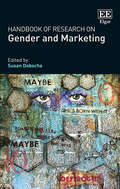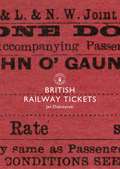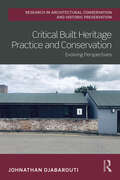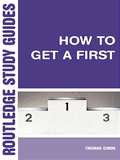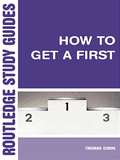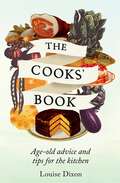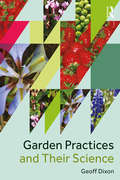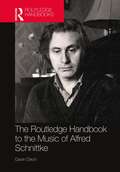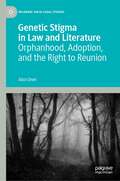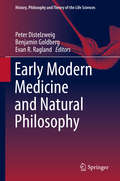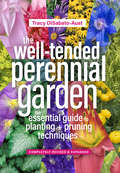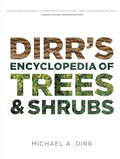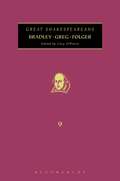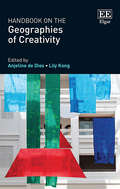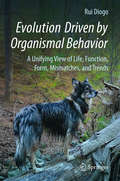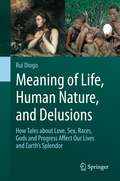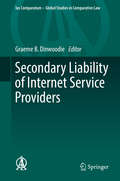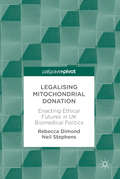- Table View
- List View
Handbook of Research on Gender and Marketing (Research Handbooks in Business and Management series)
by Susan DobschaSusan Dobscha and the contributors in this Handbook provide a primer and resource for scholars and practitioners keen to develop or enhance their understanding of how gender permeates marketing decisions, consumer experiences, public policy initiatives, and market practices. This Handbook’s main objective is to provide a roadmap through the complicated terrain of gender as it pertains to marketing and consumer behavior. The book also emphasizes that the study of gender is not restricted to certain theories, methods, or approaches. The unifying conclusion is that the study of gender is an important topic that has not received the attention it deserves within the marketing discipline; and attention to gender is crucial now more than ever. This book will give marketing scholars the guidance they need to incorporate the topic of gender into their research by highlighting the current conversations that are taking place in the field of marketing, and more importantly, by illuminating the gap in which more scholarship is necessary to increase our understanding of gender complexities.
British Railway Tickets (Shire Library)
by Jan DobrzynskiIn 1838 Thomas Edmondson, an employee of the fledgling Newcastle & Carlisle Railway, revolutionised the ticket issuing process in Britain and left an enduring legacy: the Edmondson ticket. Purchased as proof of the contract between passenger and railway company, the ticket was a receipt, travel pass and an ephemeral record of almost every train journey ever taken in the British Isles, reflecting the nostalgia of the railways and a period of history when the movement of millions of people brought together England, Ireland, Scotland and Wales. The railways printed millions of tickets for every conceivable journey and category of passenger. Most were destroyed after use, but remarkably many survive, in the care of libraries, museums and collectors, and form the basis of a fascinating hobby.
British Railway Tickets (Shire Library)
by Jan DobrzynskiIn 1838 Thomas Edmondson, an employee of the fledgling Newcastle & Carlisle Railway, revolutionised the ticket issuing process in Britain and left an enduring legacy: the Edmondson ticket. Purchased as proof of the contract between passenger and railway company, the ticket was a receipt, travel pass and an ephemeral record of almost every train journey ever taken in the British Isles, reflecting the nostalgia of the railways and a period of history when the movement of millions of people brought together England, Ireland, Scotland and Wales. The railways printed millions of tickets for every conceivable journey and category of passenger. Most were destroyed after use, but remarkably many survive, in the care of libraries, museums and collectors, and form the basis of a fascinating hobby.
Guide to Life and Literature of the Southwest
by Frank DobieA compilation of South-Western literature.
Critical Built Heritage Practice and Conservation: Evolving Perspectives (Routledge Research in Architectural Conservation and Historic Preservation)
by Johnathan DjabaroutiCritical Built Heritage Practice and Conservation - Evolving Perspectives supports an alternative point of departure for engaging with the historic built environment, by critically questioning the legitimacy of dominant conservation concepts and methods that are often taken for granted within building conservation, architecture, and adaptive reuse. The meaning of heritage is changing. From pastness to presentness, from preservation to participation, and from tangible to intangible, heritage is increasingly understood as a dynamic, social, and intangible process across many disciplines. Consequently, the role and remit of the built heritage practitioner – and in particular the architectural conservationist – is becoming progressively complex and in need of a critical gaze. Is restoration really a falsehood from beginning to end? Should the condition of existing materials determine the conservation method? Is authenticity really an inherent quality within old buildings? By engaging with a critical interpretation of heritage, this book makes space for practitioners to consider the evolution of their own role within a rapidly changing context of built heritage practice. Reinforced by a shift in emphasis from materials to meanings, a ‘socio-material outlook’ is proposed which champions an enhanced focus on intangible heritage within the built heritage sector, whilst still acknowledging the physical condition of old buildings is a priority for many stakeholders. This book has been written with practitioners, students, and educators of architectural conservation in mind – although will also be of relevance to the broader built heritage industry; as well as academics, researchers, and heritage students with a passion for contemporary dialogues in heritage studies.
Critical Built Heritage Practice and Conservation: Evolving Perspectives (Routledge Research in Architectural Conservation and Historic Preservation)
by Johnathan DjabaroutiCritical Built Heritage Practice and Conservation - Evolving Perspectives supports an alternative point of departure for engaging with the historic built environment, by critically questioning the legitimacy of dominant conservation concepts and methods that are often taken for granted within building conservation, architecture, and adaptive reuse. The meaning of heritage is changing. From pastness to presentness, from preservation to participation, and from tangible to intangible, heritage is increasingly understood as a dynamic, social, and intangible process across many disciplines. Consequently, the role and remit of the built heritage practitioner – and in particular the architectural conservationist – is becoming progressively complex and in need of a critical gaze. Is restoration really a falsehood from beginning to end? Should the condition of existing materials determine the conservation method? Is authenticity really an inherent quality within old buildings? By engaging with a critical interpretation of heritage, this book makes space for practitioners to consider the evolution of their own role within a rapidly changing context of built heritage practice. Reinforced by a shift in emphasis from materials to meanings, a ‘socio-material outlook’ is proposed which champions an enhanced focus on intangible heritage within the built heritage sector, whilst still acknowledging the physical condition of old buildings is a priority for many stakeholders. This book has been written with practitioners, students, and educators of architectural conservation in mind – although will also be of relevance to the broader built heritage industry; as well as academics, researchers, and heritage students with a passion for contemporary dialogues in heritage studies.
How to Get a First: The Essential Guide to Academic Success
by Thomas DixonIn this informative guide, Thomas Dixon argues that you do not have to be a genius to get a first at university. He sets out to de-mystify first-class degrees in the arts, humanities and social sciences, clearly articulating the difference between the excellent and the merely competent in undergraduate work. This concise, no-nonsense guidebook will give prospective and current students advice on teaching and learning styles that prevail in university and on how to manage their two most important resources - their time and their lecturers. In an accessible and entertaining style, the author looks at subjects such as: making the transition from school to university developing transferable skills making use of lectures and seminars using libraries and the Internet note-taking, essays, seminars and presentations common mistakes to avoid writing with clarity and style revision and examinations. Illustrated with many examples from a range of academic disciplines, How to Get a First is an all-purpose guide to success in academic life. Visit the companion website www.getafirst.com
How to Get a First: The Essential Guide to Academic Success
by Thomas DixonIn this informative guide, Thomas Dixon argues that you do not have to be a genius to get a first at university. He sets out to de-mystify first-class degrees in the arts, humanities and social sciences, clearly articulating the difference between the excellent and the merely competent in undergraduate work. This concise, no-nonsense guidebook will give prospective and current students advice on teaching and learning styles that prevail in university and on how to manage their two most important resources - their time and their lecturers. In an accessible and entertaining style, the author looks at subjects such as: making the transition from school to university developing transferable skills making use of lectures and seminars using libraries and the Internet note-taking, essays, seminars and presentations common mistakes to avoid writing with clarity and style revision and examinations. Illustrated with many examples from a range of academic disciplines, How to Get a First is an all-purpose guide to success in academic life. Visit the companion website www.getafirst.com
How To Get A First: The Essential Guide To Academic Success (PDF)
by Thomas DixonIn this informative guide, Thomas Dixon argues that you do not have to be a genius to get a first at university. He sets out to de-mystify first-class degrees in the arts, humanities and social sciences, clearly articulating the difference between the excellent and the merely competent in undergraduate work. This concise, no-nonsense guidebook will give prospective and current students advice on teaching and learning styles that prevail in university and on how to manage their two most important resources - their time and their lecturers. In an accessible and entertaining style, the author looks at subjects such as: making the transition from school to university developing transferable skills making use of lectures and seminars using libraries and the Internet note-taking, essays, seminars and presentations common mistakes to avoid writing with clarity and style revision and examinations. Illustrated with many examples from a range of academic disciplines, How to Get a First is an all-purpose guide to success in academic life. Visit the companion website www. getafirst. com
The Cooks' Book: Age-old advice and tips for the kitchen
by Louise DixonWhether you want to get back to basics, throw away the ready-meals and cook some traditional tasties, or you are simply interested in studying the old tried-and-tested methods used in the good old days, The Cooks' Book has the wisdom and advice of the trained chef at your disposal. This book is a treasure trove of information that will bring out the best in everyone in the kitchen. From advice on food hygiene, handling and preparation to techniques and tricks to help your bread rise and your pies taste just like Grandma made them. Also includes, old, new - and some surprising - uses for store cupboard staples, some tips and tricks for successful jams, preserves and pickles and important storage and reheating advice at your fingertips.
Garden Practices and Their Science
by Geoff DixonWritten in a clear and accessible style, Garden Practices and Their Science guides gardeners in the practical arts of plant husbandry and in their understanding of its underpinning principles. The author, Professor Geoff Dixon, is an acknowledged and internationally respected horticulturist and microbiologist; he intertwines these arts and principles carefully, expertly leading readers from one to the other. Achieving the manipulation of plant life is described in eight full-colour, well-illustrated chapters covering the growing of potatoes, bulb onions, legumes, small-seeded vegetables, soft fruit, bulbs and herbaceous ornamentals in great detail. Environmental factors controlling the successful husbandry of these crops is described in simple, non-technical language, increasing gardeners’ enjoyment and competence. Gardeners are also informed of the tools and equipment they require and their safe use. Also provided are a series of simple, straightforward tests identifying the aerial and soil environments beneficial for plant growth using readily accessible domestic tools. Discussions of very straightforward techniques for vegetative propagation conclude this book. Each chapter ends with a list of the gardening knowledge that has been gained by readers. The structure of this book fulfils a longstanding need for descriptions of practical skills integrated with the corresponding biological reactions of plants. Emphasis is placed on gardeners’ development of healthy soils, which encourage vigorous, active root systems capable of withstanding stresses—an aspect of gardening that rarely receives sufficient attention. Tailored for readers requiring clear and concise directions, this very practical book is an instruction manual directed at early-stage gardening learners. These include people of all ages and requirements such as new garden owners, allotment-holders, apprentices and students of basic levels in the Royal Horticultural Society’s or City & Guilds qualifications, career changers, community gardeners and those needing applied biological knowledge for GCSE examinations.
Garden Practices and Their Science
by Geoff DixonWritten in a clear and accessible style, Garden Practices and Their Science guides gardeners in the practical arts of plant husbandry and in their understanding of its underpinning principles. The author, Professor Geoff Dixon, is an acknowledged and internationally respected horticulturist and microbiologist; he intertwines these arts and principles carefully, expertly leading readers from one to the other. Achieving the manipulation of plant life is described in eight full-colour, well-illustrated chapters covering the growing of potatoes, bulb onions, legumes, small-seeded vegetables, soft fruit, bulbs and herbaceous ornamentals in great detail. Environmental factors controlling the successful husbandry of these crops is described in simple, non-technical language, increasing gardeners’ enjoyment and competence. Gardeners are also informed of the tools and equipment they require and their safe use. Also provided are a series of simple, straightforward tests identifying the aerial and soil environments beneficial for plant growth using readily accessible domestic tools. Discussions of very straightforward techniques for vegetative propagation conclude this book. Each chapter ends with a list of the gardening knowledge that has been gained by readers. The structure of this book fulfils a longstanding need for descriptions of practical skills integrated with the corresponding biological reactions of plants. Emphasis is placed on gardeners’ development of healthy soils, which encourage vigorous, active root systems capable of withstanding stresses—an aspect of gardening that rarely receives sufficient attention. Tailored for readers requiring clear and concise directions, this very practical book is an instruction manual directed at early-stage gardening learners. These include people of all ages and requirements such as new garden owners, allotment-holders, apprentices and students of basic levels in the Royal Horticultural Society’s or City & Guilds qualifications, career changers, community gardeners and those needing applied biological knowledge for GCSE examinations.
The Routledge Handbook to the Music of Alfred Schnittke (Routledge Russian and East European Music and Culture)
by Gavin DixonThe Routledge Handbook to the Music of Alfred Schnittke is a comprehensive study of the work of one of the most important Russian composers of the late 20th century. Each piece is discussed in detail, with particular attention to the composer’s groundbreaking polystylism, as well as his unique approach to musical symbolism and his deep engagement with Christian themes. This is the first publication to look at Schnittke’s output in its entirety, and for most works it represents either the first ever published analysis or the first in a language other than Russian. The volume presents new research from the Ivashkin-Schnittke Archive at Goldsmiths, University of London and the collection of Schnittke’s compositional sketches at the Julliard Library in New York. It also draws on the substantial research on Schnittke’s music published in the Russian language. Including a work list and bibliography of primary and secondary sources, this is an essential reference for all those interested in Russian music, 20th-century music and performance studies.
The Routledge Handbook to the Music of Alfred Schnittke (Routledge Russian and East European Music and Culture)
by Gavin DixonThe Routledge Handbook to the Music of Alfred Schnittke is a comprehensive study of the work of one of the most important Russian composers of the late 20th century. Each piece is discussed in detail, with particular attention to the composer’s groundbreaking polystylism, as well as his unique approach to musical symbolism and his deep engagement with Christian themes. This is the first publication to look at Schnittke’s output in its entirety, and for most works it represents either the first ever published analysis or the first in a language other than Russian. The volume presents new research from the Ivashkin-Schnittke Archive at Goldsmiths, University of London and the collection of Schnittke’s compositional sketches at the Julliard Library in New York. It also draws on the substantial research on Schnittke’s music published in the Russian language. Including a work list and bibliography of primary and secondary sources, this is an essential reference for all those interested in Russian music, 20th-century music and performance studies.
Genetic Stigma in Law and Literature: Orphanhood, Adoption, and the Right to Reunion (Palgrave Socio-Legal Studies)
by Alice DiverThis book critically analyses the way in which traditional sociocultural and legal biases might be perpetuated against those with unknown – or unknowable – genetic ancestries. It looks to law and works of literature across differing eras and genres focussing upon such concepts as inherited stigma, illegitimacy, orphanisation, adoption, othering, reunion, and the ‘right’ to access truths that relate to one’s original identity. Law’s role in such matters is often limited (or usurped) by custom, practice, or lingering superstitious beliefs; the importance of oral and written testimony is therefore highlighted. Characters include abandoned or orphaned figures from folk and fairy tales, Romantic and Victorian monsters and heroes, Dickensian waifs, Edwardian rescue orphans, and dystopia-set ‘rebels.‘ Their insights and experiences are mirrored in various present day scenarios that speak to familial human rights abuses, not least forced adoptions and bars on accessing original information. This cross-disciplinary book drawing on Law, Literature, Sociology, Critical Adoption Studies should be of interest to those interested in and those who have been affected in some way by adoption, origin deprivation, or reunion.
Early Modern Medicine and Natural Philosophy (History, Philosophy and Theory of the Life Sciences #14)
by Peter Distelzweig Benjamin Goldberg Evan R. RaglandThis volume presents an innovative look at early modern medicine and natural philosophy as historically interrelated developments. The individual chapters chart this interrelation in a variety of contexts, from the Humanists who drew on Hippocrates, Galen, and Aristotle to answer philosophical and medical questions, to medical debates on the limits and power of mechanism, and on to eighteenth-century controversies over medical materialism and 'atheism.'The work presented here broadens our understanding of both philosophy and medicine in this period by illustrating the ways these disciplines were in deep theoretical and methodological dialogue and by demonstrating the importance of this dialogue for understanding their history.Taken together, these papers argue that to overlook the medical context of natural philosophy and the philosophical context of medicine is to overlook fundamentally important aspects of these intellectual endeavors.
The Well-Tended Perennial Garden: The Essential Guide to Planting and Pruning Techniques, Third Edition
by Tracy DiSabato-AustThis completely revised third edition of the bestselling classic The Well-Tended Perennial Garden is a must-have ally in the quest for a beautiful, well-maintained garden.
Dirr's Encyclopedia of Trees and Shrubs
by Michael A. DirrA combination of Dirr's bestselling books under one cover, adding new plants, new photographs, plus all new commentary in Dirr's signature style, Dirr's Encyclopedia of Trees and Shrubs is the bible of woody plants.
Bradley, Greg, Folger: Great Shakespeareans: Volume IX (Great Shakespeareans)
by Cary DiPietroA comprehensive critical analysis of the most important Shakespearean critics, editors, actors and directors. This volume focuses on Shakespeare's reception by Bradley, Greg and Folger.
Bradley, Greg, Folger: Great Shakespeareans: Volume IX (Great Shakespeareans)
by Cary DiPietroA comprehensive critical analysis of the most important Shakespearean critics, editors, actors and directors. This volume focuses on Shakespeare's reception by Bradley, Greg and Folger.
Handbook on the Geographies of Creativity
by Anjeline De Dios Lily KongAdopting a geographically diverse and theoretically rigorous approach, this Handbook on the Geographies of Creativity is a cutting-edge study of creativity as it has emerged in policy, academic, activist, and cultural discourse over the last two decades. A range of sectors are explored with in-depth engagement and understanding, including: dance, music, craft, visual art, circus arts and fashion. This Handbook departs from conventional modes of analysing creativity by industry, region or sector, and instead identifies key themes that thread through shifting contexts of the creative, namely creativity as imaginary, locality, mobility, labour, culture, intervention and method. By tracing the myriad spatialities of creativity, the chapters map its inherently paradoxical features: reinforcing persistent conditions of inequality even as it opens avenues for imagining and enacting more equitable futures. The conceptual framework proposed for critically appraising present debates and articulating future directions for creative and cultural industries will be useful for scholars and academics researching culture, media and design. Policy makers and professionals working in creative and cultural industries (CCIs) will find the wide range of case studies in this Handbook an essential tool for further understanding the field.
Evolution Driven by Organismal Behavior: A Unifying View of Life, Function, Form, Mismatches and Trends
by Rui DiogoThis book proposes a new way to think about evolution. The author carefully brings together evidence from diverse fields of science. In the process, he bridges the gaps between many different--and usually seen as conflicting--ideas to present one integrative theory named ONCE, which stands for Organic Nonoptimal Constrained Evolution. The author argues that evolution is mainly driven by the behavioral choices and persistence of organisms themselves, in a process in which Darwinian natural selection is mainly a secondary--but still crucial--evolutionary player. Within ONCE, evolution is therefore generally made of mistakes and mismatches and trial-and-error situations, and is not a process where organisms engage in an incessant, suffocating struggle in which they can't thrive if they are not optimally adapted to their habitats and the external environment. Therefore, this unifying view incorporates a more comprehensive view of the diversity and complexity of life by stressing that organisms are not merely passive evolutionary players under the rule of external factors. This insightful and well-reasoned argument is based on numerous fascinating case studies from a wide range of organisms, including bacteria, plants, insects and diverse examples from the evolution of our own species. The book has an appeal to researchers, students, teachers, and those with an interest in the history and philosophy of science, as well as to the broader public, as it brings life back into biology by emphasizing that organisms, including humans, are the key active players in evolution and thus in the future of life on this wonderful planet.
Meaning of Life, Human Nature, and Delusions: How Tales about Love, Sex, Races, Gods and Progress Affect Our Lives and Earth's Splendor
by Rui DiogoWhatever are your beliefs, background, education, political views or interests, one thing is sure: this book will engage you, teach you something new, and more importantly make you to re-think deeply about critical aspects of your daily-life, including sex, love, food, physical activities, diseases, work and stress, and how you see and deal with other people, other animals, and the planet in general. Indeed, it focuses on topics that have fascinated people from all places and historical periods since times immemorial: Why are we here? What is the meaning of life? Are we progressing, and will we thrive? It does this by integrating in a unique fashion information from ancient Greek, Sumerian, Hindu, Jewish, Buddhist, Christian and Muslim texts to high-tech brain research, facts about near-death experiences, Covid-19, QAnon conspiracies, virtual reality and dating aps; from Adam and Eve to the rise of misogyny and racism to Black Lives Matter, Me-Too, Hollywood romantic movies and Disney fairy-tales. Contrary to notions about 'human progress' and 'Homo Deus' defended by authors such as Harari, Pinker and Dawkins, it shows that human history instead involves the repetition of similar imaginary tales created by a combination of traits found in other animals and the uniquely human obsession about 'cosmic purpose' stories related to our awareness of death's inevitability. Organized religions appeared later, chiefly during the rise of agriculture and 'civilizations'. Diogo navigates mesmerizing untold stories revealing a paradox: these events and the industrial 'revolution' increased inequality, oppression, slavery, subjugation of women, famines, plagues, 'work', stress, and suicides. Data from psychology, biology, neurobiology, and cross-cultural studies of hunter-gatherers and so-called 'developed' societies reveal an even more profound paradox: within all forms of life, the 'sapient being' is the one immersed in Neverland's world of unreality - truly a Homo irrationalis, fictus and socialis believing in fictional tales about cosmic 'duties', 'romantic meant to be', demons, inferior 'races' and 'genders', conspiracies, and 'justified' slavery, warfare, genocides, and animal abuses. Importantly, such tales play, on the other hand, crucial functions such as help coping with death and a plethora of societal troubles, decreasing stress, or preventing drug and alcohol abuse. An optimist and passionate wondered and wanderer, Diogo provides enthralling details about the history of religion, discrimination, romantic love, warfare, diseases and Earth's biodiversity illustrating how 'virtue is in the middle' and that we - with our intriguing combination of beliefs, bodily needs and desires, artistic abilities, and mismatches between our senses' illusions and the cosmos' reality - are not 'better' or 'worse' than the other millions of captivating living species. This powerful and urgently needed message has critical repercussions for how we understand, care about, and mindfully enjoy living in this splendid planet, in the reality of here and now.Pre-publication comments: "I applaud the enormous work that Diogo has invested in this follow-up to his widely acclaimed Evolution driven by organismal behavior book, and the challenge of getting people to think beyond and outside of our usual set of definitions and expectations. The case-studies provided in the book are fascinating and insightful" (Drew Noden, Award-winning Emeritus Professor, Cornell University)"Rui Diogo is becoming the Slavoj Zizek of evolutionary biology" (Marcelo Sanchez-Villagra, Director of the Paleontological Institute and Museum of the University of Zurich)
Secondary Liability of Internet Service Providers (Ius Comparatum - Global Studies in Comparative Law #25)
by Graeme B. DinwoodieThis book analyses the doctrinal structure and content of secondary liability rules that hold internet service providers liable for the conduct of others, including the safe harbours (or immunities) of which they may take advantage, and the range of remedies that can be secured against such providers. Many such claims involve intellectual property infringement, but the treatment extends beyond that field of law. Because there are few formal international standards which govern the question of secondary liability, comprehension of the international landscape requires treatment of a broad range of national approaches. This book thus canvasses numerous jurisdictions across several continents, but presents these comparative studies thematically to highlight evolving commonalities and trans-border commercial practices that exist despite the lack of hard international law. The analysis presented in this book allows exploration not only of contemporary debates about the appropriate policy levers through which to regulate intermediaries, but also about the conceptual character of secondary liability rules.
Legalising Mitochondrial Donation
by Rebecca Dimond Neil StephensIn 2015 the UK became the first country in the world to legalise mitochondrial donation, a controversial germ line reproductive technology to prevent the transmission of mitochondrial disease. Dimond and Stephens track the intense period of scientific and ethical review, public consultation and parliamentary debates preceeding the decision. They draw on stakeholder accounts and public documents to explore how patients, professionals, institutions and publics mobilised within ‘for’ and ‘against’ clusters, engaging in extensive promissory, emotional, bureaucratic, ethical, embodied and clinical labour to justify competing visions of an ethical future. They describe how this decision is the latest iteration of a UK sociotechnical imaginary in which the further liberalization of human embryo research and use is rendered legitimate and ethical through modes of consultation and permissive but strictly regulated licensing. Overall, this book presents a timely, multi-dimensional, and sociological account of a globally significant landmark in the history of human genetics, and will be relevant to those with an interest in genetics, Science, Technology and Society, the sociology of medicine, reproductive technology, and public policy debate.
